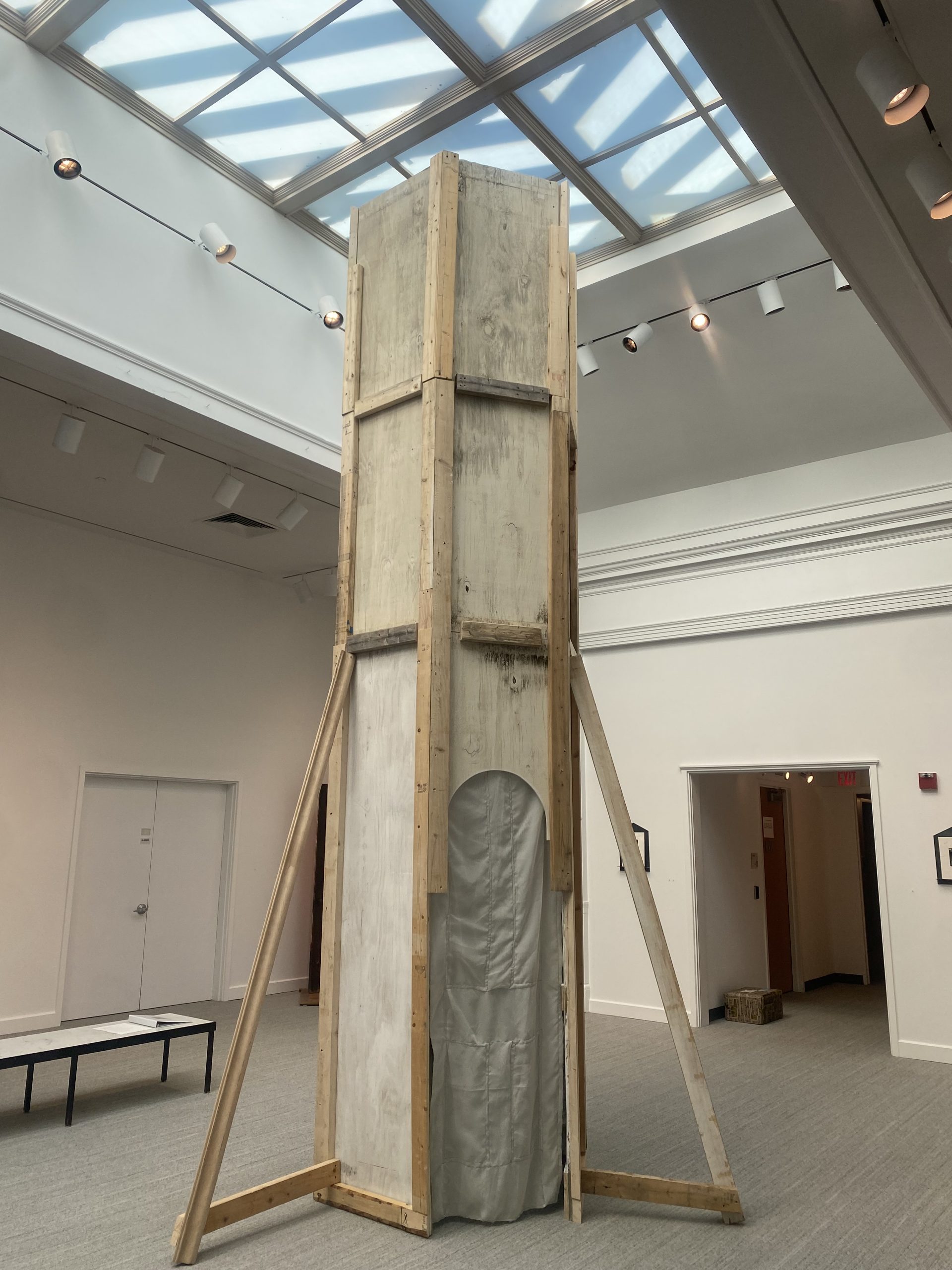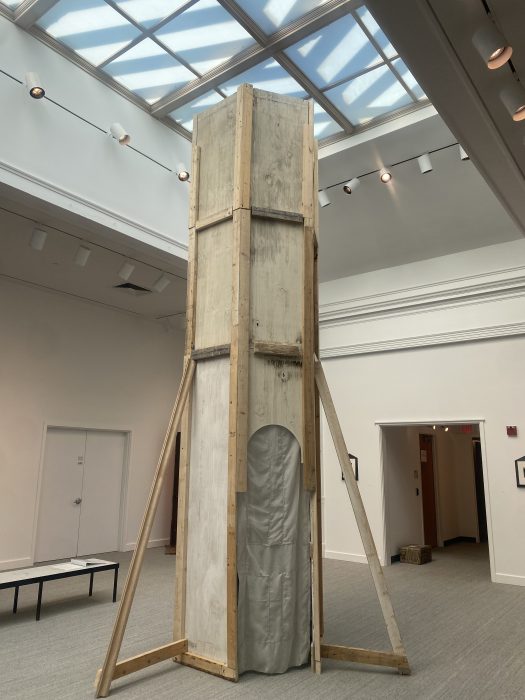April 16, 2024

Transcript by Gallery and Curatorial Fellow Cat Teo

Transcript
In Eben Haines’ Well, he takes us further into his understanding of society, and how we’ve become complacent in our own entrapment and ignorance. Well is a cylindrical wooden sculpture made of recycled plywood that reaches about sixteen feet tall. The curtain on its opening represents a door, inviting the viewer to step inside and take a closer look. On the inside of Well, spliced, worn doors surround the viewer, leaving nothing but the hole at the top to remind them of the outside world.
In this sculpture, Haines’ is giving us a glimpse into his understanding of how society is ensnared culturally and ecologically. The well that we find ourselves in gives us nowhere to escape the issues that are leading us down a dark path; our previous mistakes continue to keep us isolated. As you gently pull the curtain aside and step into the well, gaze up and observe how the eroded walls seem to close in around you. The hole at the top gives us only a tiny view of our reality and what surrounds us.
Well is a representation of how the world has become blind to other possibilities when trying to solve impending issues such as climate change, affordable housing, and sea level rise. The way that these problems have been managed before has trapped us, leading the world to be faced with a “dead end” as Haines puts it. In Haines’ artist statement he quotes the Polish writer Olga Tokarczuk in her book Drive Your Plow Over the Bones of the Dead, Torkarczuk stating “They really were the people from the well – they’d fallen into it long ago and had now arranged their lives at the bottom of it, thinking the well was the entire world.” The way that the world has been dealing with these complicated societal and climate-related issues, to us, seems like the only way they can be managed. The world is collectively stuck at the bottom of its own well, ignorant to the other ways in which society can function and blind to new or novel solutions.
WELL is made of plywood that was previously used for a project that Haines’ completed in September of 2023. The installation, titled Tide House, was a public artwork created for Now + There placed along the Charlestown waterfront in Menino Park. The project included a recreation of a triple decker home, which was, at one point, one of the most affordable housing options in Boston. The small house was painted white, symbolizing the white washing of our housing history. Tide House was displayed for 10 weeks, the wood and lime wash slowly wearing away, revealing signs of life from before the house was painted. The installation focused on flooding and how it will specifically affect people who live in low income housing while also commenting on the sterility of modern housing architecture. Well is a sculpture that makes us consider the state of our world and the trajectory of humanity’s future. Haines’ work asks the viewer the question: how have we limited our view on societal issues, finding ourselves stuck at the bottom of this well? What steps has the world taken to create our perspective on these problems? And what are some ways that the world can go forward to broaden our understanding?